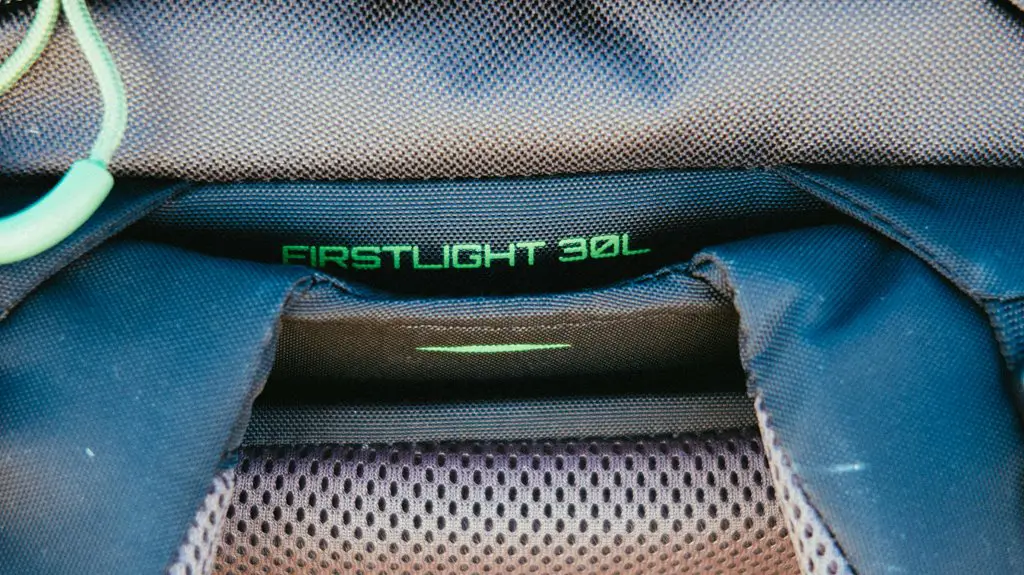When you’re choosing outdoor gear, durability is a key factor that can’t be overlooked. You might assume nylon is the obvious choice due to its toughness, but polyester has its own strengths that often get overlooked. Both materials respond differently to wear, UV exposure, and moisture, which can affect how your gear holds up over time. Understanding these differences could change the way you pick your next jacket or backpack.
Table of Contents
Key Takeaways
- Nylon offers superior abrasion and tear resistance, making it more durable for rugged outdoor use than polyester.
- Polyester resists UV damage better, maintaining durability longer under prolonged sun exposure compared to nylon.
- Nylon’s higher tensile strength and elasticity enhance shock absorption and puncture resistance in demanding conditions.
- Polyester absorbs less moisture and dries faster, reducing mildew risk and maintaining durability in wet environments.
- Polyester is more cost-effective but nylon’s durability may reduce replacement frequency, providing long-term value.
Durability Comparison Between Polyester and Nylon
Although both polyester and nylon offer strong durability, nylon generally outperforms polyester when it comes to resistance against abrasion and tearing.
When you choose outdoor gear, nylon’s resilience means it can handle rough terrain and frequent use without wearing out quickly.
That said, polyester longevity shouldn’t be underestimated; it holds up well over time, especially under less demanding conditions.
Nylon fibers are naturally stronger and more flexible, so they resist punctures and abrasions better than polyester.
Nylon’s natural strength and flexibility make it superior in resisting punctures and abrasions compared to polyester.
However, polyester is less prone to stretching and can maintain its shape longer.
Depending on your activities, if you need gear that withstands heavy wear and tear, nylon is your best bet.
But if you want something durable with good lifespan under moderate use, polyester still serves you well.
Environmental Resistance and UV Impact
When choosing between polyester and nylon for outdoor gear, it’s important to contemplate how each material handles environmental factors like moisture and sunlight.
Polyester offers superior UV resistance, meaning it won’t degrade as quickly when exposed to prolonged sunlight. This makes polyester gear a smart choice if you’ll spend a lot of time outdoors under direct sun.
Nylon, while strong, tends to weaken over time with UV exposure, which can impact its durability and environmental impact since damaged gear may need replacing sooner.
Considering environmental resistance, polyester generally resists fading and brittleness better, reducing waste.
Moisture Handling and Drying Properties
When you’re choosing outdoor gear, how well the fabric handles moisture can make a big difference.
Polyester tends to absorb less water than nylon, so it dries faster and keeps you drier.
Let’s compare how each material performs when it comes to moisture absorption and drying speed.
Moisture Absorption Differences
Since outdoor gear often encounters wet conditions, understanding how polyester and nylon handle moisture is essential for staying comfortable.
Polyester generally has lower moisture retention compared to nylon, meaning it absorbs less water during your adventures. This characteristic helps you stay drier when exposed to rain or sweat.
Nylon, on the other hand, tends to absorb more moisture, which might make it feel heavier and damp for longer periods.
However, both materials can be treated to enhance water repellency, improving their resistance to moisture.
When choosing gear, consider how each fabric’s natural moisture absorption affects your comfort and performance. Knowing these differences helps you pick the right material that manages moisture effectively, keeping you dry and comfortable on the trail.
Drying Speed Comparison
Understanding how polyester and nylon absorb moisture sets the stage for comparing how quickly they dry.
Polyester tends to repel water more effectively, which boosts its drying efficiency. When you’re out hiking or camping, this means polyester gear dries faster, reducing discomfort and the risk of chafing.
Nylon, on the other hand, absorbs more moisture, so it takes longer to dry.
Your choice of drying methods also affects drying speed. Air drying works well for both, but polyester responds better to heat-based methods like tumble drying or sunlight exposure, speeding up the process.
Nylon requires more time and gentle handling to avoid damage.
Strength and Elasticity in Outdoor Use
When choosing between polyester and nylon, you’ll want to contemplate how each handles strength and elasticity in tough conditions.
Nylon generally offers higher tensile strength and better stretch, which can absorb shocks and reduce wear.
Understanding these traits helps you pick gear that performs reliably under stress.
Material Strength Comparison
Although both polyester and nylon offer impressive durability, their strength and elasticity differ in ways that can impact your outdoor gear’s performance.
Nylon typically boasts higher tensile strength due to its fiber composition, which features a more crystalline structure. This makes nylon resistant to tears and abrasions, ideal for rugged conditions.
Polyester, meanwhile, has a slightly lower tensile strength but excels in resisting UV damage and moisture absorption.
When selecting gear, consider nylon if you need maximum strength and toughness. However, polyester’s strength still holds up well for many applications, especially where exposure to sunlight and water is frequent.
Understanding these differences helps you choose the right material that matches your outdoor adventures and durability needs.
Elasticity Benefits Outdoors
Strength plays a key role in choosing outdoor gear, but elasticity also affects how well materials perform in various conditions.
When you’re out in nature, the ability of your gear to stretch and bounce back—known as stretch recovery—can make a big difference.
Here’s why outdoor flexibility matters:
- It lets your gear move with you, enhancing comfort during activities like hiking or climbing.
- Good stretch recovery helps maintain shape and fit, even after repeated use.
- Elastic materials absorb sudden pulls or tugs, reducing the risk of tears.
- Outdoor flexibility adapts to changing conditions, such as temperature shifts that affect fabric behavior.
Performance Under Stress
Because outdoor gear often faces intense conditions, understanding how materials handle stress is essential for your safety and comfort.
When you look at stress testing results, nylon generally shows higher load resistance compared to polyester. This means nylon can better withstand sudden pulls and heavy loads without tearing or deforming.
However, polyester offers consistent strength and retains its shape well under prolonged stress, which is vital during extended outdoor activities.
If your gear needs to endure sharp impacts or heavy strain, nylon is likely the better choice. But if you prioritize maintaining elasticity and shape over time, polyester holds an advantage.
Knowing these differences helps you select gear that performs reliably under stress, ensuring it supports you effectively in demanding outdoor environments.
Cost Considerations and Production Impact
When choosing between polyester and nylon for outdoor gear, you’ll find that cost plays a significant role in your decision. Production costs for polyester tend to be lower, making it more budget-friendly.
However, nylon’s higher cost often reflects its superior strength and abrasion resistance. Sustainability practices also impact your choice; polyester can be recycled more easily, which appeals if you prioritize eco-friendly options.
Consider these points:
- Polyester generally costs less to produce, making gear more affordable.
- Nylon’s production is more energy-intensive, raising its price.
- Recycled polyester reduces environmental impact, aligning with sustainability goals.
- Nylon’s durability can mean fewer replacements, potentially saving money long-term.
Balancing upfront costs with environmental impact can guide you to the right material.
Application Suitability for Different Outdoor Activities
Understanding the cost and production differences between polyester and nylon sets the stage for choosing the right material based on your outdoor activity.
For backpacking gear, nylon’s superior strength and abrasion resistance make it ideal when you need lightweight, durable fabrics that withstand rough trails.
When it comes to climbing apparel, nylon’s stretch and toughness offer better flexibility and protection.
On the other hand, polyester excels in camping equipment like tents and sleeping bags, thanks to its excellent UV resistance and quick-drying properties.
If you’re into water sports, polyester is your go-to because it resists water absorption and dries faster, preventing mildew.
Long-Term Performance and Maintenance Tips
Although both polyester and nylon offer durable options for outdoor gear, their long-term performance depends heavily on proper care and maintenance.
To guarantee your gear lasts, you need to follow effective long term care and maintenance routines suited for each fabric.
- Clean your gear regularly using mild detergents to avoid degrading fibers.
- Air dry instead of using high heat, which can weaken polyester and nylon.
- Store in a cool, dry place to prevent mold and UV damage.
- Inspect for wear and repair small tears promptly to extend lifespan.
Frequently Asked Questions
Can Mixing Polyester and Nylon Improve Outdoor Gear Durability?
You’ll find fabric blends can boost outdoor gear durability by combining strengths from both fibers. Performance testing shows blends often resist abrasion and moisture better, giving you gear that lasts longer and performs well in tough conditions.
How Do Nylon and Polyester Affect Allergy Risk in Outdoor Clothing?
Imagine fabric as a garden—nylon’s like a wildflower, sometimes triggering allergy symptoms, while polyester’s a steady oak, less prone to fabric sensitivity. You’ll want to choose wisely to keep your skin calm and comfortable outdoors.
Are There Eco-Friendly Alternatives to Nylon and Polyester for Outdoor Gear?
You can choose sustainable materials like organic cotton for your outdoor gear. It’s eco-friendly, breathable, and biodegradable, offering a greener alternative to nylon and polyester while still providing comfort and decent durability for your adventures.
What Are the Best Cleaning Methods for Nylon Versus Polyester Gear?
Wondering how to keep your gear fresh? Use gentle cleaning techniques like cold water and mild detergent for both nylon and polyester. Don’t forget maintenance tips like air drying and avoiding bleach to prolong your gear’s life!
How Do Polyester and Nylon Perform in Extreme Cold Weather Conditions?
You’ll find nylon’s cold weather performance better due to its superior fabric insulation properties, keeping you warmer and more comfortable. Polyester can handle cold but doesn’t insulate as well, so you might feel the chill more quickly.
- Does Chiffon Fabric Stink - July 15, 2025
- Does Chiffon Fabric Affect the Economy - July 15, 2025
- Does Cotton Fabric Have a Nap - July 15, 2025




